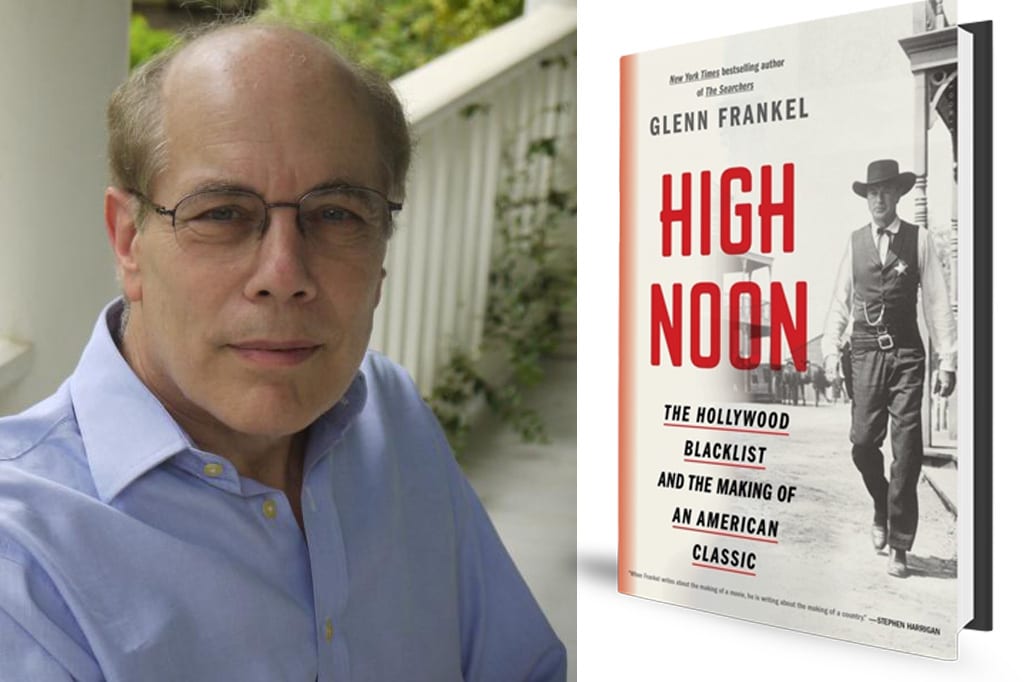This book is a fascinating companion to Victor Navasky’s Naming Names, which was a fairly comprehensive general history of that era of scoundrels and evil opportunists thought of as McCarthyism but which had at its centre the appallingly blinkered and self-righteous House Un-American Activities Committee (affectionately known as HUAC), a Senate committee that rode roughshod over the Constitution of the USA for much longer than McCarthy managed. Glenn Frankel’s compelling book, nicely produced and published by Bloomsbury, focuses mesmerizingly on the relationship of HUAC to Hollywood, and also on the impact this had on the making of the classic Western movie High Noon and its gripping subtexts. Frankel sees the script of High Noon as reflecting strongly what was going on with the Red Scare in Hollywood at the time. The hero of the book is Carl Foreman, who conceived the story and then adapted it as he came under increasing pressure from HUAC to testify and to name names. Indeed, in the end Foreman had to flee to England to work.
Featured players include Gary Cooper, the ailing star of the film, who took on the project at a time when he felt a strong need to resurrect his reputation as an actor; Fred Zinnemann, whose commitment to the project was in itself stellar; and the producer, Stanley Kramer. You get the full background story of each of these men, and many more involved in the film High Noon and in the persecution of Hollywood’s left wing.
The book is well-written and is a real page-turner, going into the background of the Hollywood film industry itself, to show why Hollywood was so vulnerable to the pressures of HUAC in the late 1940s. This book is also a superb companion piece to the recently filmed Trumbo and certainly all the people who figure in that tale turn up as major or minor characters in this one too, So you get to revisit the self-serving bigotry or narrow-minded pusillanimity of people like Hedda Hopper, John Wayne, Ronald Reagan, Adolph Menjou, Richard Nixon, and all the senators who contributed to the insanity that was the Black List. The book shows a clear delineation of how the Black List happened – something some people still insist was not as bad as all that or even that it never really existed at all. So this book is also an attack on the Black List Deniers and a significant stand it takes is about knowing the actual facts, not the alternative ones. You also get sound and thought-provoking insights into how much people thought they were acting for the good of the country, fighting to save America from being overthrown by the Red Menace. The paranoia, at times, seems almost to leap off the page but so does some strong sympathy for the gulled and a great deal of understanding for both sides.
By the end of the book, you have the complete story of the making of High Noon but seen very much through the prism of the HUAC investigations of Hollywood. The book serves its double interest fully and convincingly throughout. There isn’t a dull or unnecessary page; the tale is told tautly, like a thriller.
Informative, well-written and totally compelling, this is an excellent study of the impact on Hollywood and the arts of the mentality infecting America that drove HUAC and overcame the protests of people who could see through it but had no hope for years of doing anything substantial about it. You are made both to understand and to feel the frustration. Those people who tried to combat HUAC and the black list include some pretty stellar and surprising names: Lucille Ball, Humphrey Bogart, and Gregory Peck, among others. And then there are the tragedies of people like John Garfield.
I learned a lot from this book. I ended up, to my surprise, developing more of an understanding of and even sympathy for Gary Cooper, who is usually labelled as an arch Conservative; even greater admiration for Fred Zinnemann and Carl Foreman in particular than I had had before; and some disappointment about Stanley Kramer and how he behaved during the worst years of the crisis.
This is a book that manages to be informative, infuriating, educational, dramatic and entertaining all at the same time. It also gives you a wonderful journey through the background of Hollywood itself from the silent era onward. I recommend it highly to anyone even if you are not already interested in Hollywood, the Black List, or the movie High Noon.

